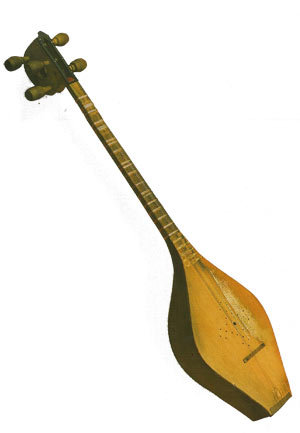Home page
» MUSIC APPLIANCES
» String instruments
» Choqur
Choqur It is clear from historical sources that the XII-XVI centuries, in the period between the replacement of qopuz with saz , in the Caucasus, Iran and Anatolia Sufi ceremonies, in dervish-ashug parties the musical instrument named as chagir, chaqur, chuqur, chogur was used. Probably, chogur means a musical instrument used to call just, Allah. It may be assumed that this word is taken from common language word chal-chagir (call) and then being formed as chogur. It is known from different historical sources that in order to create the fighting spirit in the army of Safavid state in the Middle Ages the chogur musical instrument was used. But chogur musical instrument exhibited in the History Museum of Azerbaijan attributed to the XIX century consist of two double string and 22 curtains. Body of the instrument is made of mulberry wood by assembling method. The upper part of the body is covered with 4 mm thick wood. Arm and head part is made of the walnut, and tuning pegs of pear tree. The total length is 880 mm, the length of body is 400 mm, width is 225 mm, height is 140 mm. 22 curtains are fixed to arm. 2 hollows are made in side of the body and some hollows for sound resonance in the upper part. The sound structure is from small octave’s do to the second octave’s sol sound.
|
